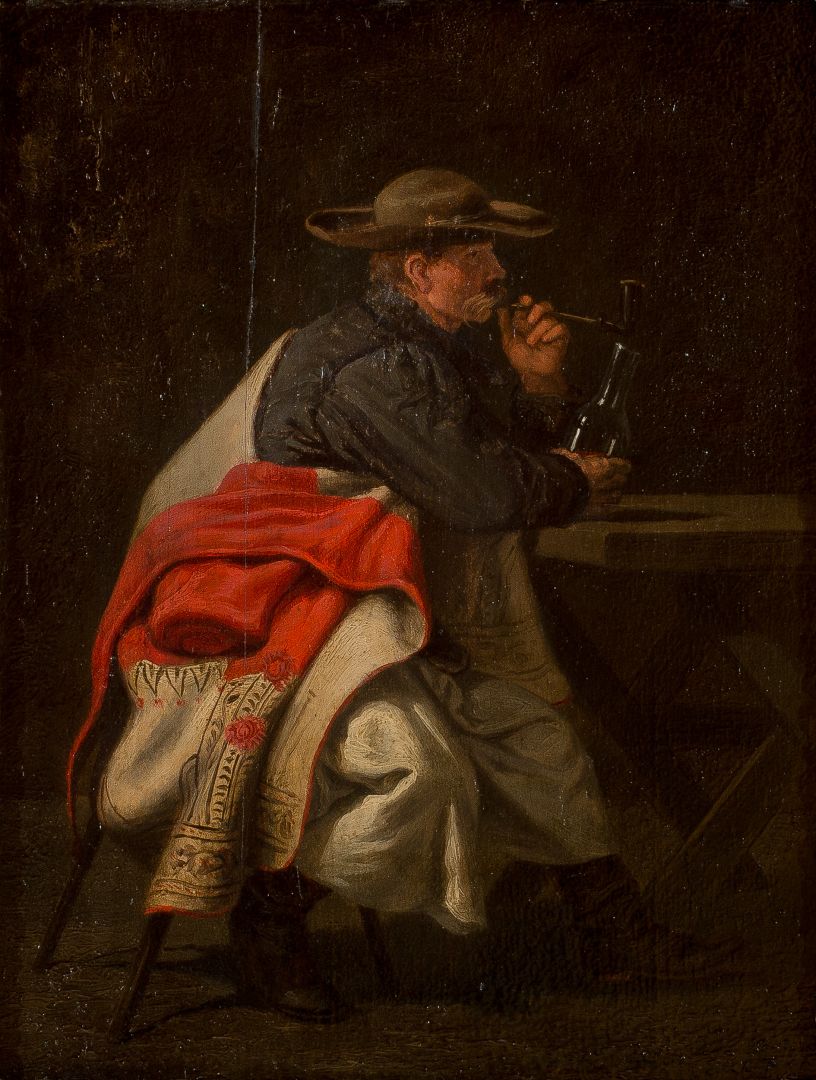Hall 1 - 6. view
Peasant Drinking Wine
SZEMLÉR, MIHÁLY (1833–1904)
Peasant Drinking Wine, 1874
oil on wooden board, 26x20 cm; marking in the upper right: Szemlér M. 1874.
Fine Arts Collection, Inv. No.: 93.28.
Following the fall of the Hungarian Revolution and War of Independence of 1848–1849, themes that reinforced national identity gained a particularly significant role in Hungarian fine arts. In addition to artworks that evoked glorious events from the historical past, folk genre paintings also carried intrinsic symbolic meaning. The tropes developed during this period remained popular even after the Austro-Hungarian Compromise of 1867.
Mihály Szemlér participated in the War of Independence as a child: he served as a lieutenant by the side of General Richárd Guyon. He studied fine arts in Budapest and Vienna, after which he diligently worked as an art teacher, painter and graphic artist. He spent his summer seeking out various themes for future artworks: he traversed rural Hungary and catalogued various scenes and characters from village life with the same scrutiny as an ethnographer would. He later on created detailed compositions based on these sketches back at his Budapest studio.
The painting showcased here is a tavern scene, a topic Szemlér made several paintings of. This composition in particular only features a singular figure. The pensive swine-herd sitting at the table and staring in front of himself is dressed in an embroidered felt cloak, which is one of the most characteristic pieces of Hungarian folk wear. The small painting is devoid of any unnecessary details, which ensures that all attention is directed towards the characteristic folk character, who can also be interpreted as an emblematic figure representing Hungarians as a whole, who bear their fate with dignity.
The painting was acquired by a private individual from Miskolc as a state-protected artwork during the 28th picture auction of the Second-hand Store Company in 1972. It was purchased by the Herman Ottó Museum in 1993.
Andrea Pirint
